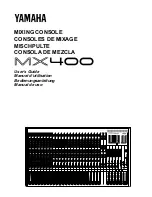
Wren Turbines Ltd. MW54 Mk2 & Mk3 Turbo-Jet, kit assembly instructions, Jun 2004
Page 7
The MW54 Mk2 and Mk3 Gas Turbine Kit - Introduction.
This kit is a development of our very popular MW54 Mk1 kit introduced in Dec 2001, of which over 200 have been sold. This earlier version required some
metalworking to complete and customer feedback had indicated it would benefit from a more complete level of fabrication. The Mk2 version was in response to
this and as a result there is no metalworking or soldering/brazing required for it’s completion. The Mk3 version is exactly the same engine but includes a deluxe
one piece machined stainless case and exhaust nozzle and the turbine comes pre-balanced on the shaft for convenience. The extras are available to Mk2 owners
for upgrade at any time to suit their budget and timescale.
The concept of the kit gas turbine engine is to bring to the modeller the latest in miniature turbo-jet technology but at an affordable price, and in the process
help the modeller to gain familiarity with this new breed of internal combustion engine. The kit is for the thrust engine in its simple but fully functional form, to
which the builder can add their choice of accessories such as a stylish anodized green front cover, pod-style on-board starter and clutch system, single-piece
stainless case, tuned twin piece exhaust, thrust tube, FOD screen etc, all available from Wren Turbines. This approach allows the builder to stage their
construction to suit their time-scale and budget and chosen application. Additionally, the engine can be fitted with alternative versions of the popular FADEC
ECU such as the Manual ECO or Auto-start version, (for which the green cover and pod starter are required). To this can be added a simple external gas start
system or a full on-board gas start system and as these are all standard accessories for the Wren range of MW54 engine turbines, you can be sure of plenty of
choices when building up your turbine installation.
Builders who have purchased the MW54 plan-set (available from Wren Turbines) which covered the in-depth construction from an engineering viewpoint, will
note several changes have been made to facilitate ease of assembly over the original design, although the basic design remains the same. It is not intended to
change the plan for the foreseeable future. The extras listed above and the balancing options following also apply to the “homebuilt” version of the engine. All
components of the engine are available separately as spares enabling you to structure your project to suit your chosen timescale and budget.
Balancing.
We are regularly asked about balancing and we have accumulated a lot of experience as to what is acceptable and what is not, and what forms of in-balance
correction are realistic. To achieve satisfactory smooth running of our engine we need a good standard of dynamic balance and how this is achieved is the focus
of this section. We have tried to keep the description of this complex process as straight-forward as possible and we apologize in advance if the reader finds the
section overly simplistic.
The two main forms of balance we are concerned with are
static
and
dynamic
. The simple way to appreciate the difference is to turn a bicycle over, remove the
chain and observe the pedals remain somewhat at rest, ie in
static
balance. However if we spin the pedals quickly the bicycle will wriggle about from side to side,
ie not in
dynamic
balance. On our engine the two components which are individually out of balance are fairly narrow discs so we can easily distribute the out-
of-balance correction without generating what is called a
couple –
effectively a wobble
.
The shaft can be regarded as not requiring balancing as it is highly
precision ground and concentricity run-out is unlikely or of small consequence here.
To achieve a pseudo dynamic balance of our engine we do the equivalent of balancing just one pedal without the other attached, ie we first balance the
turbine mounted on the shaft (with its bearing, spacer and nut) and then replace the other
pedal
, ie the compressor, and balance this to achieve an overall
balanced rotor. The turbine has considerable mass and will always require correction before use due to the casting process. It is supplied ready mounted to the
shaft and should not be removed except to replace the turbine bearing. Being narrow, it can be successfully “dynamically” balanced as it is quite easy to show
Summary of Contents for MW54 Mk2
Page 1: ......








































